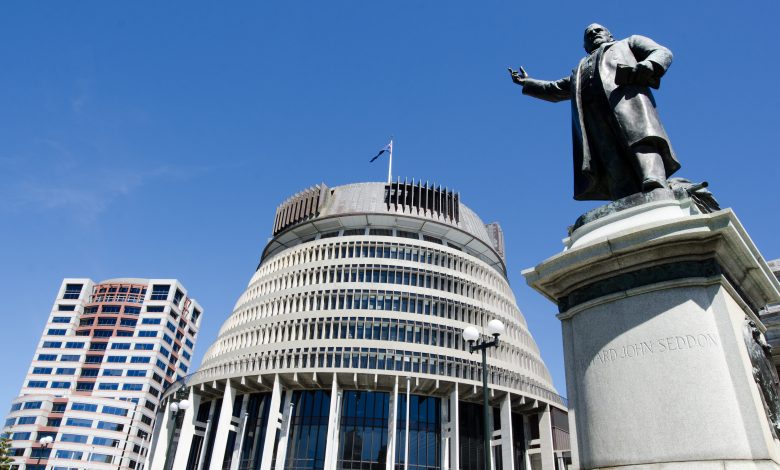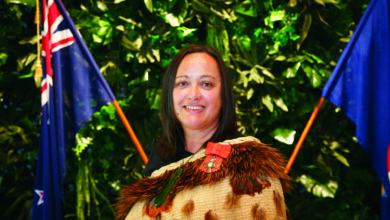Ministry of Education battles with sector ahead of election year
Industrial, legal action and unrest between the education sector and the Ministry of Education rises ahead of the election.

The Ministry of Education is facing industrial and legal action from teaching unions, as well as pressure from education leaders ahead of the election next year.
As collective agreement negotiations begin, and fast-paced curriculum changes are taking effect, tensions are rising between the sector and the government.
Read the latest print edition of School News online HERE.
Collective agreement negotiations off to a rough start
Recently, PPTA Te Wehengarua rejected one of the lowest ever pay offers made to secondary teachers of a one percent pay rise per year.
The offer comes after the Public Service Commissioner, Sir Brian Roche, announced he would take the responsibility of collective agreement negotiations.
“The economic environment and the government’s fiscal position are very difficult. Every additional dollar spent must be weighed against what is sustainable and fair to all New Zealanders,” said Roche
“I am open to continued dialogue and am committed to reaching a settlement that supports teachers, students, and our public school system.”
PPTA President Chris Abercrombie said he wanted a pay offer that reflected teachers’ skills. Additionally, there was no response to pastoral care allowances, PLD funding or management unit and allowances increases.
“The Government’s initial offer in no way addresses the core issues of teacher recruitment and retention and unmet student need, and has been rejected by our national executive.”
The offer was not put to members, but voted down by the national executive. The union would consult members over the next week.

“To receive an initial offer such as this is insulting and frustrating. The feedback I’m already getting from teachers is that they feel very under valued. They are doing amazing work in the midst of relentless curriculum and assessment change, and are managing increasingly complex needs of students.”
Education Minister Erica Stanford said she was disappointed the offer wasn’t put to members.
“It wasn’t unexpected because they don’t often make that first offer available to their members. I thought it was a reasonable offer. It should have been put to the members, and it was disappointing that it wasn’t.”
Meanwhile, teacher aides and school support staff represented by the NZEI Te Riu Roa have rejected their latest offer. It is the third from the Ministry of Education, which amounted to a four percent raise over three years for the lowest paid support staff, and 1.7 percent for the highest paid.
It falls short of the 10 percent over three years NZEI Te Riu Roa was seeking.
Representative Ally Kingi said members were angry about the offer, especially following the loss of the pay equity scheme, but had yet to decide next steps.
“I think it’s a feeling of a workforce that’s felt under-valued and then through winning our pay equity claims we had that real feeling of our work being seen and valued and felt really great. And then sort of to have sunk back down again, people aren’t prepared to do that,” she said.
“It’s hitting all of us in the backpocket… most people work just school hours or part of that time because we know schools aren’t funded properly to employ us or to support the children that need supporting.”

At the same time, specialist staff who work in the field, such as speech language therapists, early intervention teachers and occupational therapists have taken industrial action over their collective offer.
Around 2300 staff, represented by NZEI Te Riu Roa and the PSA have been suspended, and the Ministry has asked for an urgent mediation.
Legal action over resource teacher cuts
NZEI Te Riu Roa is also taking the Ministry of Education to court over the cuts to funding for resource teachers, filing for a judicial review in late July. The union claims the Ministry had decided to cut the service before asking the sector for consultation.
A judicial review looks at the way a decision was made, ensuring that the relevant decision-maker acted within legal powers and followed due process.
President Ripeka Lessels, a former resource teacher of Māori said:
“I look forward to seeing whether the court believes the consultation with these teachers was fair and genuine, whether the decision was pre-determined, and whether the Government has upheld its obligations under Te Tiriti o Waitangi.
“I find it very hard to understand why you would cut the numbers of frontline Māori education roles or specialist literacy roles when the Government says it is prioritising literacy.”
The union adds that under Budget 2025, overall numbers of Māori education workforce will drop by 31 full-time equivalent roles, and overall literacy support workforce will be reduced by 43 FTE roles.
Clashes over curriculum changes
Newly leaked MoE documents show that the Ministry of Education did not have clear internal definitions for key terms at times during the curriculum rewrites.
Sector leaders have since spoken out against the fast-pace of change.
Leanne Otene, President of the Principals’ Federation called the changes chaotic.
“We’ve had multiple announcements, and they’re disconnected initiatives and they are creating chaos,” said Otene.
Insufficient training and a lack of assessment tools tailored to the new curriculums were other issuses, she said.
Record teacher number increase
Despite the ongoing clashes between the education sector and the government, there has been an increase in teacher numbers – the largest since 2009, when records began.
“Every region has more teachers than it did a year ago, with particularly strong increases in South and West Auckland, Waikato, Bay of Plenty, Wellington and Canterbury. That’s a clear sign our reform of the education system is giving people the confidence to choose teaching as a career,” said Stanford.
Students in initial teacher education had also increased 27 percent compared to last year. Stanford attributed the increase to the governments’ reforms.
“It’s what we’re creating, and people want to be a part of this, and I know that teachers are appreciating all of the resource and the professional learning and development and the brand new curriculum and all of the resources that we’re putting into the sector,” she said.
“We for example last year funded teacher certification and fees, and that brought back about 500 teachers back into the sector alone; we’ve created more on-site training places, we’ve got scholarships, there’s all sorts of things.”









